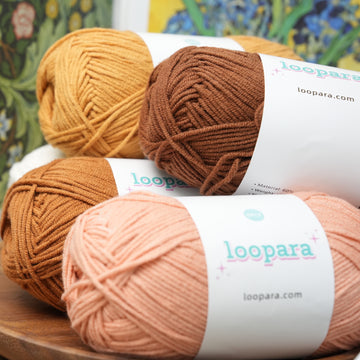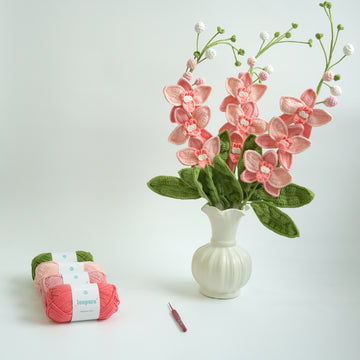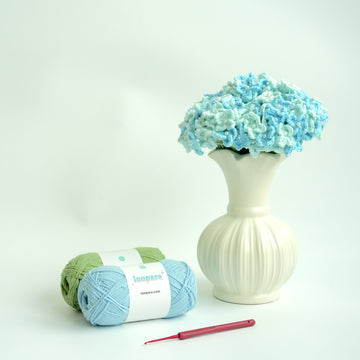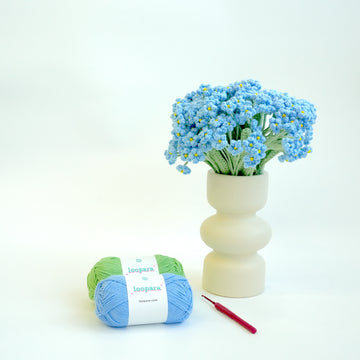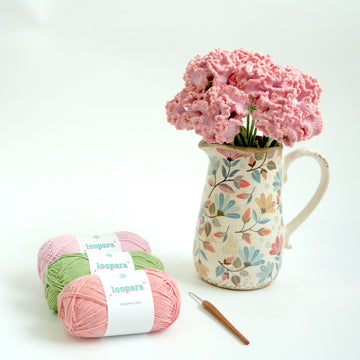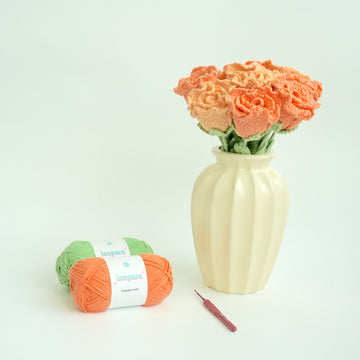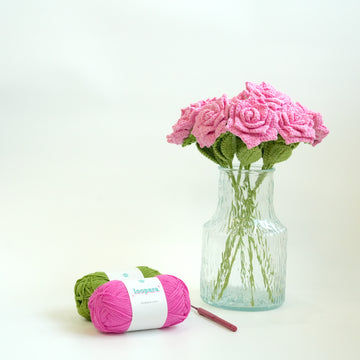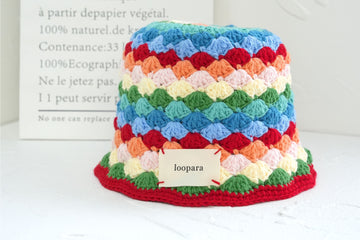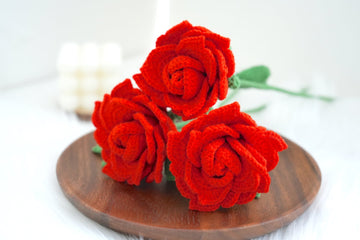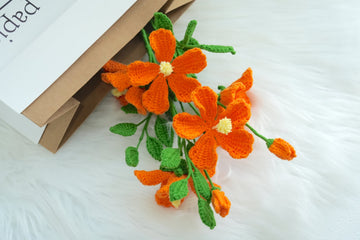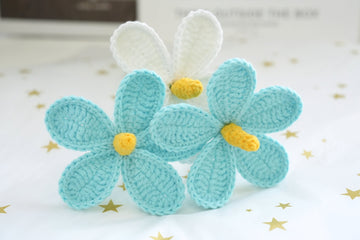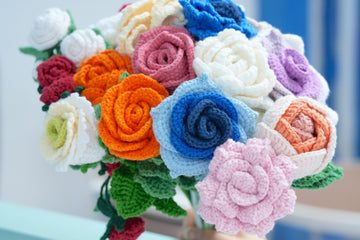A crocheted blanket makes a wonderful gift for a loved one, or a cosy addition to your home. But just how big should it be?
We’re going to look at standard crochet blanket sizes to suit all purposes. We’ll explain how to work out how many stitches and rows you need to make a blanket in a bespoke size. And we’ll share some hints and tips to for making the perfect blanket.
Why plan your blanket size?
There’s a lot of variation in blanket sizes. For some projects, you may want to take things as they come, and just keep crocheting until you’re happy with the size.
That can be a good option if you’re crocheting outwards from the center. And if you’re using lots of different colors, running out of a particular yarn before you’ve finished won’t be a big deal.
But if you’re working in rows, knowing how big your blanket will be from the outset is very helpful. You won’t find you have to add on large borders because your blanket has come out too small. And you’ll know how much yarn you need in advance.
Being able to buy all your yarn in one go is particularly important if you’re working in one color. Larger or chunkier blankets will consume a lot of yarn. And for the color to be consistent throughout, you’ll need to ensure all your yarn is from the same dye batch.
If you run out before your blanket is finished, there’s no guarantee your next purchase will be exactly the same shade.
Also Read: What's the Best Yarn to Crochet a Blanket?
Standard sizes for crochet blankets
Choosing a size for your crochet blanket starts with knowing who you’re making it for. A blanket for a baby’s crib will be much smaller than one for a couple with a king-sized bed!
The table below sets out some common sizes for different types of blanket. Note that the metric to imperial conversion here isn’t precise. We’ve made small rounding adjustments for easier measuring.
|
Type of blanket |
Length |
Width |
|
Bassinet blanket |
28” (70 cm) |
14” (35 cm) |
|
Stroller or crib blanket |
36” (90 cm) |
30” (75 cm) |
|
Receiving blanket |
40” (100 cm) |
40” (100 cm) |
|
Baby blanket |
52” (130 cm) |
42” (110 cm) |
|
Swaddle blanket |
48” (120 cm) |
48” (120 cm) |
|
Lap blanket (“lapghan”) |
48” (122 cm) |
36” (90 cm) |
|
Throw - small |
60” (150 cm) |
48” (120 cm) |
|
Throw – medium |
60” (150 cm) |
52” (30 cm) |
|
Throw – large |
72” (180 cm) |
60” (150 cm) |
|
Blanket – single bed |
90” (225 cm) |
66” (165 cm) |
|
Blanket – double bed |
90” (225 cm) |
80” (200 cm) |
|
Blanket – queen-sized bed |
100” (250 cm) |
90” (225 cm) |
|
Blanket – king-sized bed |
108” (270 cm) |
100” (250 cm) |
There’s no reason you can’t tweak these measurements – they’re just a starting point. If you want extra fabric to cover a deep mattress, for example, make your blanket bigger. If you want a smaller blanket for someone in a wheelchair, just reduce the length.
Also Read: How Much Yarn to Crochet a Blanket? (Chart)

Calculating stitches and rows
You’ve chosen the size blanket you’re going to make. But how do you know how many rows and stitches that’s going to take?
For this, you’ll need two things: a gauge swatch and a bit of maths.
Making a gauge swatch
A gauge swatch is just a small piece of the crochet fabric you’ll be making for your blanket. By counting rows and stitches in the swatch, you can work out how many you’ll need for the whole blanket.
Gauge swatches are also a great way to experiment with different yarns, hook sizes and needle combinations. You can try out as many combinations as you like – just make sure your swatch measures at least 4 inches by 4 inches (10 cm by 10 cm).
When you’ve completed your ideal swatch, take a tape measure and place it along the top edge. Count out how many stitches there are in 4 inches of the fabric (or 10 cm if you prefer to use metric). Make a note of the number.
Now place the tape measure down the side. Count the number of rows in 4 inches (or 10 cm) and note that down too.
How to do the sums
Stitches per row
To work out the number of stitches you’ll need in each row, you need to divide your chosen blanket length by 4 (or 10 if you’re using metric). Then multiply the result by the number of stitches you noted down from your swatch.
Here’s an example.
You’re making a large throw, and you want it to be 72 inches long. Your swatch tells you that there are 15 stitches in 4 inches of crochet fabric. The sum you do is:
72 (your chosen length) / 4 = 18
18 x 15 (the number of stitches per 4 inches of your swatch) = 270
So you’ll need to crochet 270 stitches per row.
Number of rows
It’s a similar process to work out the number of rows. Divide the chosen blanket width by 4 (or 10) if you’re using metric. Then multiply the result by the number of rows you counted in the 4-inch-wide area of swatch.
Let’s say you were making that large throw. If you’re following the table above, that will be 60 inches wide. And counting the rows in your swatch tells you that there are 10 rows in 4 inches. So the sum you’d do is:
60 (your chosen width) / 4 = 15
15 x 10 (the number of rows per 4 inches of your swatch) = 150
So you’d need to crochet 150 rows, with 270 stitches per row, to create your blanket.

A note on patterns
Some patterns use stitch multiples – in other words, a set of stitches that are repeated across each row. You’re going to want to make sure the pattern repeat finishes at the end of the row. And that may mean you need to round up or down to get the total number of stitches per row.
Let’s look at our example of making a large throw again. You wanted it to be 72 inches long and your swatch told you that means each row has 270 stitches.
Now say you’re using a pattern with a stitch multiple of 3. And you need to add 2 stitches on either end to get a straight edge. That gives you a stitch multiple of 3 + 4 (the 4 being the two stitches at each end).
First, subtract the second part of the stitch multiple from the total number of stitches you calculated per row: 270 – 4 = 266.
Now divide the result by the first part of the stitch multiple: 266 / 3 = 88.67.
Because this isn’t a whole number, you’ll need to decide whether to round up or down. You can either stitch 88 stitch multiples per row and have a blanket that’s slightly shorter than 72 inches. Or you can choose 89 stitch multiples per row, and have a blanket that’s slightly longer.
There’s no right or wrong answer here. It’s entirely up to your personal preference.
A note on borders
Note that this approach to calculating stitches and rows doesn’t include a border.
If you want to add a border to your blanket, you’ll need to reduce your stitches and rows to accommodate that.
But if you find your plans haven’t worked out – hey, it happens to us all! – borders can save the day. If you wind up with a blanket that’s smaller than you expected, adding a border can make it the right size.
Custom blanket sizes
Making a gauge swatch will let you work out how many stitches and rows you need for a blanket of any size. Just make sure that you make your swatch with the same yarn, hook and stitch combination you’ll be using for the finished item.
We recommend making your swatch at least 4 inches by 4 inches. That’s big enough for any variations in tension as you work to average themselves out.
Count the number of stitches in 4 inches of the swatch. Divide your chosen blanket length by 4. Then multiply the answer by the number of stitches you counted.
It’s the same thing for the row count. Count the number of rows in 4 inches of your swatch. Divide your chosen blanket width by 4. Then multiply the answer by the number of rows you counted.
Just make sure that you’re consistent in using either metric or imperial measurements!
If you’re measuring your blanket in metric, use metric measurements for your swatch too. Instead of dividing your desired dimensions by 4 (inches) to calculate stitches and rows, you’d divide them by 10 (centimeters) instead.
And remember to adjust your stitches and rows to take account of any stitch multiple and borders.
Quickfire summary: crochet blanket sizes
Crochet blankets come in a range of sizes, depending on their purpose. You can use our table of standard dimensions to create a blanket that will fit the bill. Or if you want to, you can adjust the measurements as you wish.
Making up a gauge swatch will give you the information you need to work out the required number of stitches and rows. Just remember to adjust your calculations if your pattern uses stitch multiples, or if you want to add a border.


